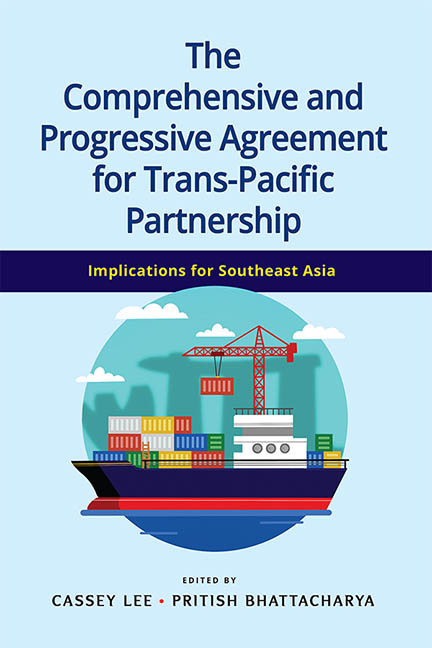Book contents
- Frontmatter
- Contents
- Preface
- Abbreviations
- About the Contributors
- 1 Introduction
- 2 The Economics of the CPTPP and RCEP: Asia Pacific Trade Agreements without the United States
- 3 The TPP and CPTPP: Truths about Power Politics
- 4 The Investment Chapter and ISDS in the CPTPP: Lessons from and for Southeast Asia
- 5 Intellectual Property in the CTPP and Access to Medicines A Thai Perspective
- 6 New Rules for State-Owned Enterprises in the CPTPP
- 7 Impact of the CPTPP on Japanese Manufacturing Affiliates in ASEAN
- 8 Reassessing Malaysia’s Export Opportunities in the TPP and CPTPP
- 9 Impact of the CPTPP on Vietnam
- 10 Should Thailand Join the CPTPP?
- 11 Indonesia, the TPP and CPTPP: Hold Your Breath
- Index
10 - Should Thailand Join the CPTPP?
Published online by Cambridge University Press: 08 October 2021
- Frontmatter
- Contents
- Preface
- Abbreviations
- About the Contributors
- 1 Introduction
- 2 The Economics of the CPTPP and RCEP: Asia Pacific Trade Agreements without the United States
- 3 The TPP and CPTPP: Truths about Power Politics
- 4 The Investment Chapter and ISDS in the CPTPP: Lessons from and for Southeast Asia
- 5 Intellectual Property in the CTPP and Access to Medicines A Thai Perspective
- 6 New Rules for State-Owned Enterprises in the CPTPP
- 7 Impact of the CPTPP on Japanese Manufacturing Affiliates in ASEAN
- 8 Reassessing Malaysia’s Export Opportunities in the TPP and CPTPP
- 9 Impact of the CPTPP on Vietnam
- 10 Should Thailand Join the CPTPP?
- 11 Indonesia, the TPP and CPTPP: Hold Your Breath
- Index
Summary
Introduction
Up until January 2017, the Trans-Pacific Partnership (TPP), the mega free trade agreement (FTA) that enveloped 40 per cent of the world GDP and whose twelve members represented a market of 800 million people, was at the centre of global trade talks. It was the most comprehensive and ambitious FTA among all existing agreements then, covering several controversial issues. Many countries, including Indonesia, Thailand and the Philippines, also expressed interest in joining the TPP.
On 23 January 2017, however, US President Donald Trump signed a Presidential Memorandum to withdraw the United States from the TPP, casting doubt on the agreement's future. Given that at least six signatory countries constituting 85 per cent of the aggregate TPP GDP (in 2013) were needed to ratify the deal, the TPP in its original form could not move forward without America—since the United States and Japan together accounted for 60 per cent of this value (Petri et al. 2017). Subsequently, the remaining eleven member countries, led by Japan, Australia and New Zealand, decided to forge ahead without the United States, by launching a new agreement titled the Comprehensive and Progressive Agreement for Trans-Pacific Partnership (CPTPP). As negotiations continued, the participating members suspended some of the agreement's more contentious topics in order to revive regional trade and, perhaps, induce more countries to join this new pact, including the possible return of the United States in the future. Agreement on the CPTPP was reached swiftly in January 2018, and the formal signing ceremony was held on 8 March 2018 in Santiago, Chile.
For Thailand, the main difference between the CPTPP and TPP lies in the fact that pharmaceutical data protection (i.e., data exclusivity) and patent extension, both of which were strongly endorsed by the United States, are excluded from the revised agreement.
Since the new millennium, the Thai government has been interested in signing FTAs with other countries, including the TPP/CPTPP economies (The Nation 2015, 2016; The Diplomat 2016; Reuters 2018). This was based on a conviction that FTAs would help private firms remain competitive in export markets. Prior to the withdrawal of the United States, Thailand had, on numerous occasions, expressed keenness in becoming a member of the TPP to gain preferential access to the United States in certain products, especially garments and processed foods.
- Type
- Chapter
- Information
- Publisher: ISEAS–Yusof Ishak InstitutePrint publication year: 2021



